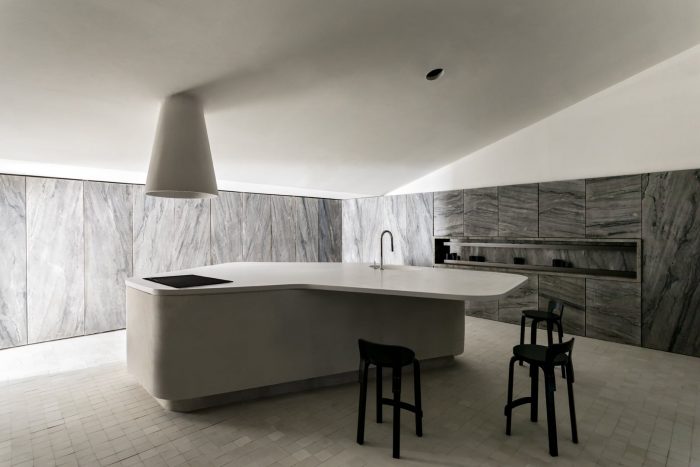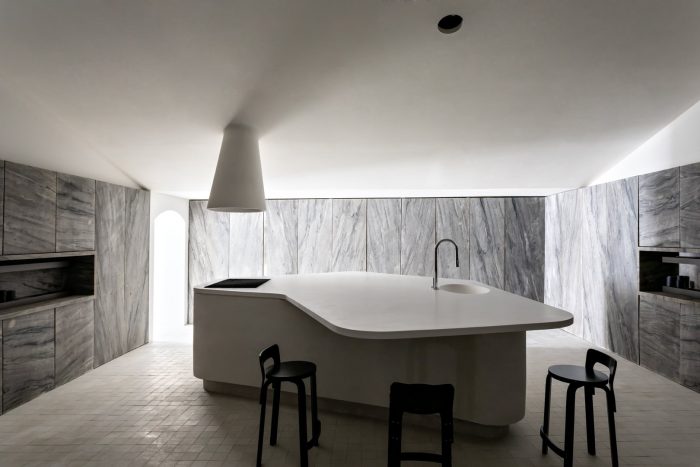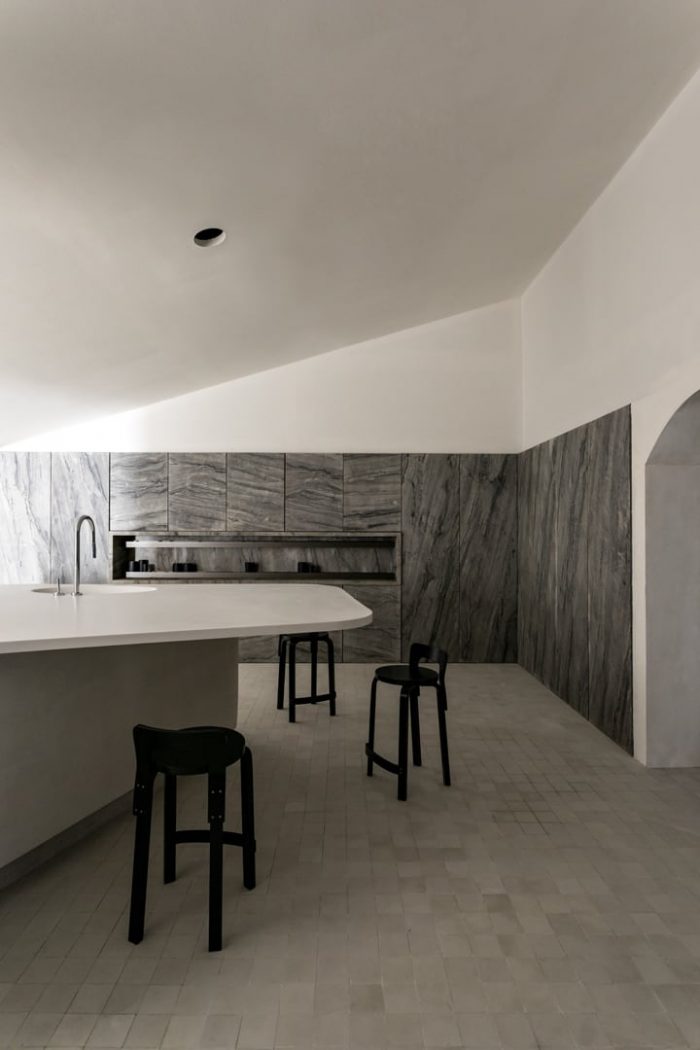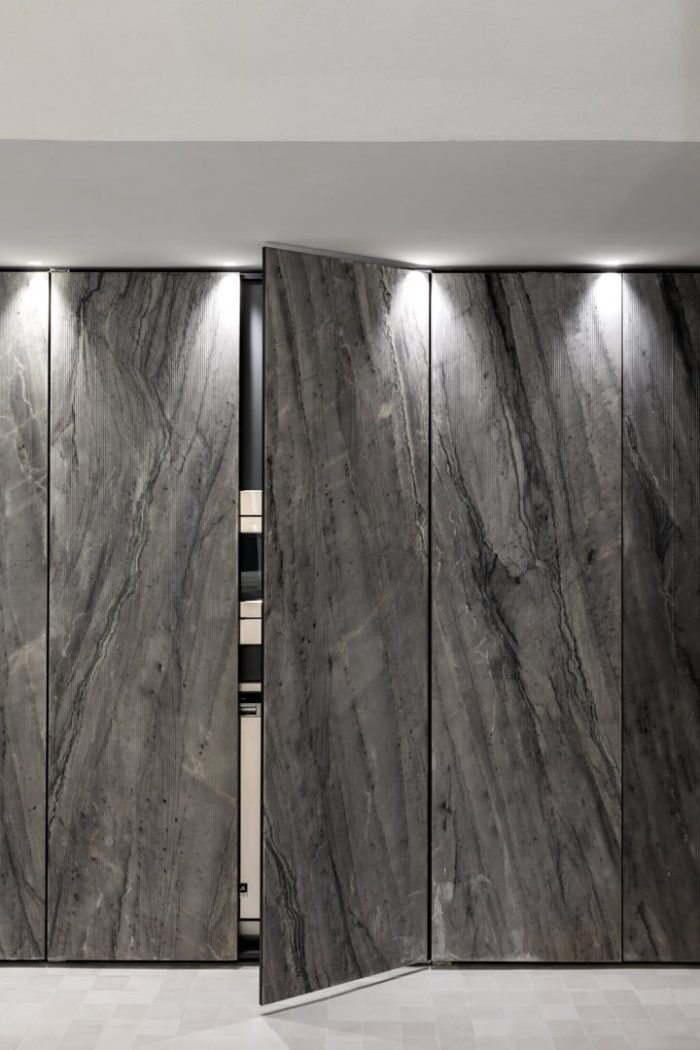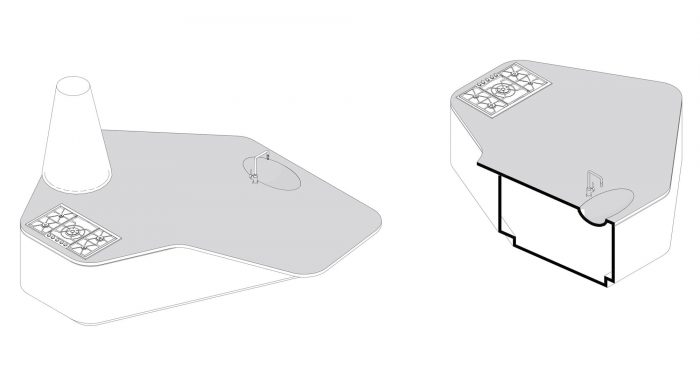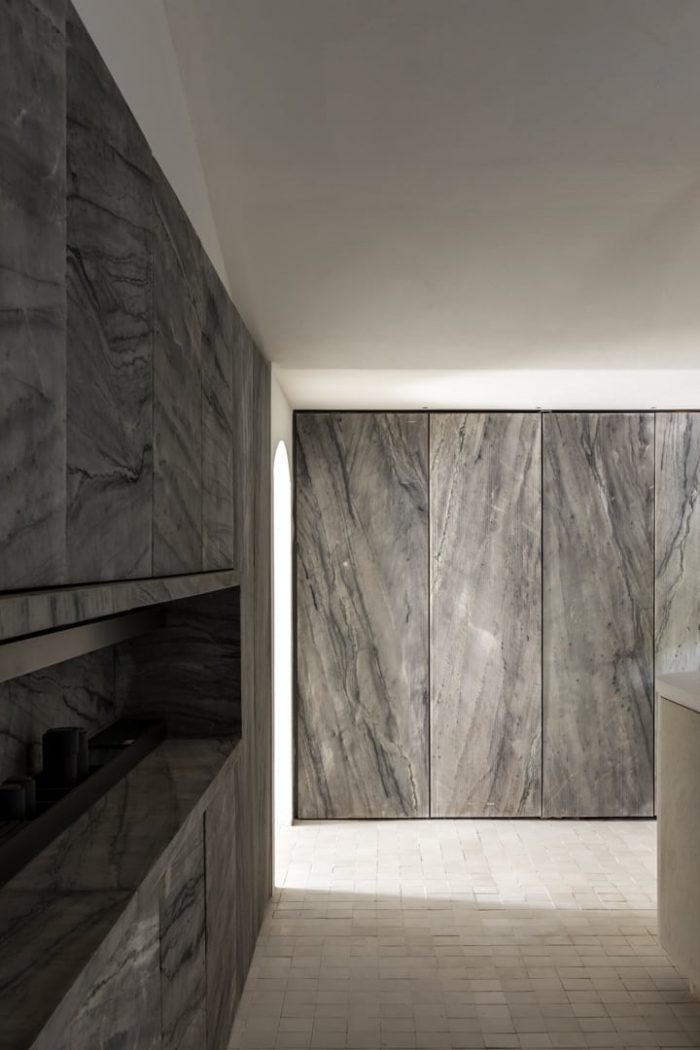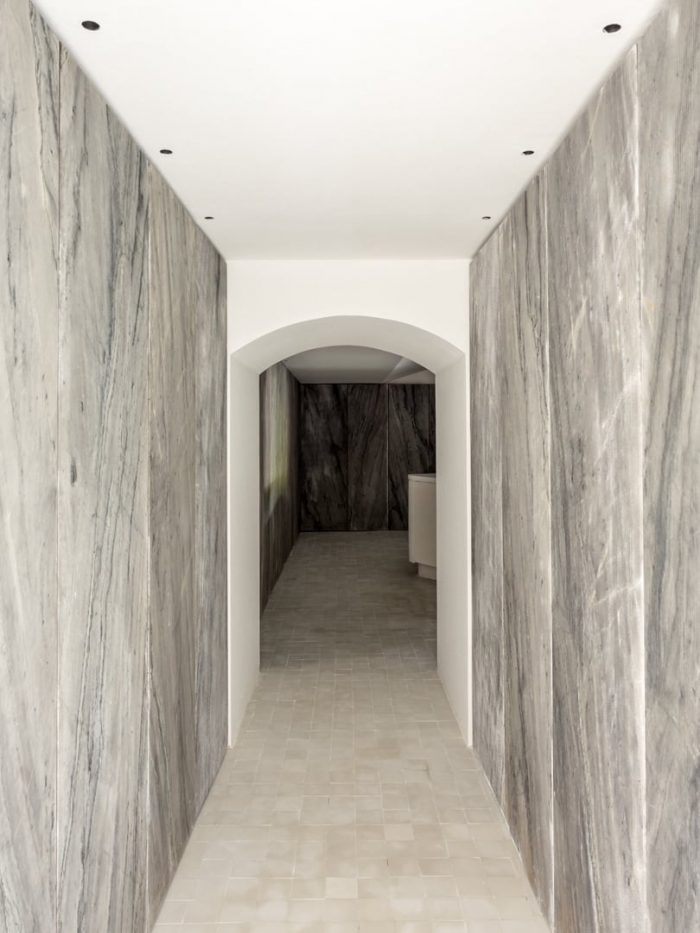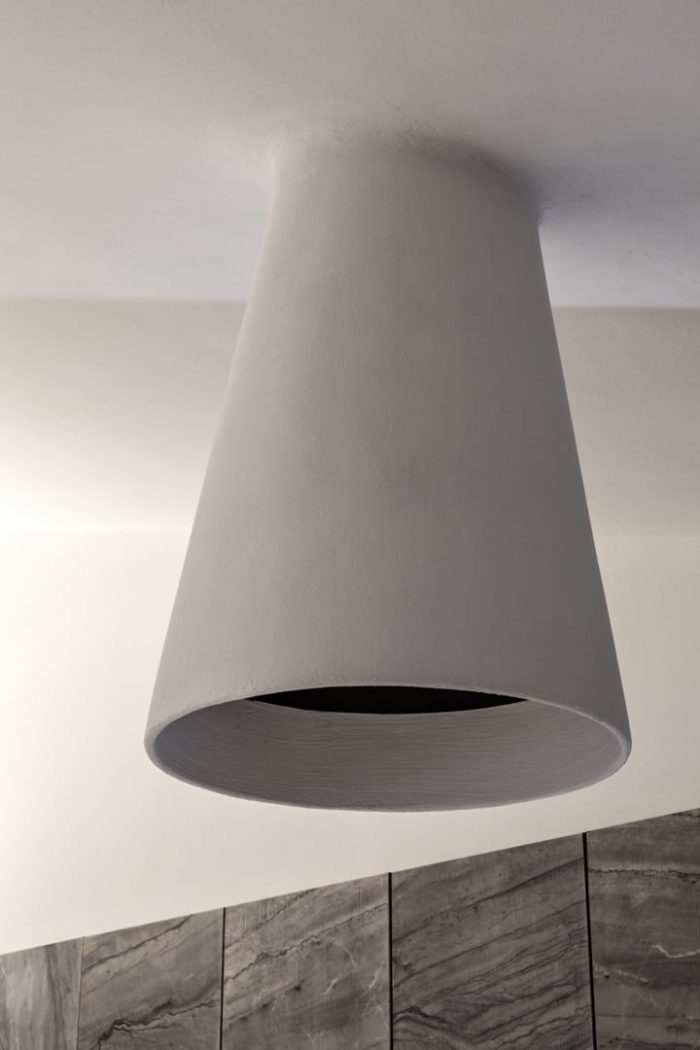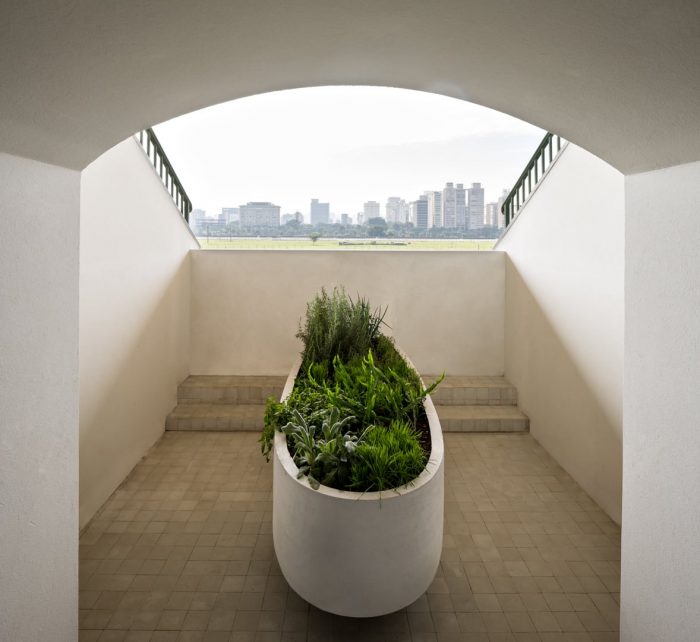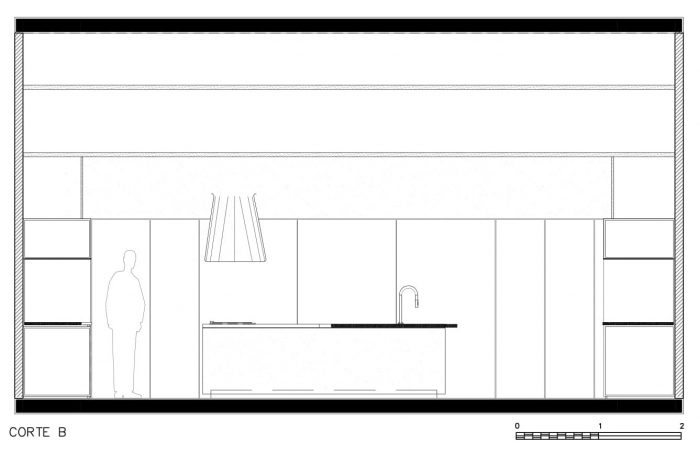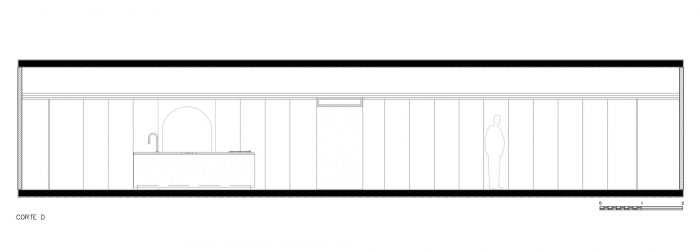“建筑是一种有学问的游戏,正确而宏伟,是在光线下集合的形式”。(勒-柯布西耶)这位瑞士-法国的现代建筑师告诉我们,”我们的眼睛是为光线下的形式而生的;阴影和空地显示为形式;立方体、圆锥体、球体、圆柱体或金字塔就像光线很好地揭示的伟大形状;你的形象不是清晰可感的,毫不含糊的。它是如何看起来很美”。以同样的方式,Cucina Pietra的设计本身就存在。它是一种命令的行为,其中点、平面和环境之间的摩擦是以一种互补和不可分割的方式设想的。它的点状干预出现在沉默中,作为物质和形式的深刻和严格的表现工具。
“Architecture is the learned game, correct and magnificent, of forms assembled in the light.” (Le Corbusier) The Swiss-French modern architect tells us that “our eyes are made for the forms under the light; the shadows and the clearings reveal as forms; the cubes, cones, spheres, cylinders or pyramids are like great shapes that light reveals well; Your images are not clear and tangible, unambiguous. It’s how it looks beautiful”. In the same way, the design of Cucina Pietra exists by itself. It is an act of ordenation in which the friction between points, planes and environment is conceived in a complementary and inseparable way. Its ponctuated interventions appear in silence, as a deep and rigorous instrument of representation of matter and forms.
遵循阿道夫-卢斯宣布的 “文化的演变与从功利性物品中去除装饰物是同义的 “这一论点,该项目立足于元素的简单性,旨在突出建筑体积和部件的可塑性。这种干预是一种实验,是对视觉关系作为身体体验的衔接者和激活者的价值的重新思考和重新开放。
Following the same argument announced by Adolf Loos that “the evolution of culture is synonymous with the removal of ornament from utilitarian objects”, the project anchors itself in the simplicity of elements and aims to highlight the plasticity of architectural volumes and components. The intervention was an experimentation, a way of rethinking and reopening the value of visual relation as articulator and activator of body experiences.
入口处的通道被一个高高的天花板所遮挡,这个天花板一直下降到平行的长走廊上。该计划有一个明确的周边,由渠道和橱柜门建成,由于SCA的技术,一个传统的巴西厨房设计公司,接受了大理石的薄层应用。在计划的中心,厨房岛的有机几何形状在刚性的周边之间创造了一种摩擦,它被一个从天花板上展开的圆柱形炉罩所加强。自然光穿过走廊,静静地溢出空间,邀请观众到外部,在那里可以看到圣保罗高层建筑的几何形状在不断演变。
The entrance access is sheltered by a high ceiling that lowers until reaching the long corridor in parallel. The plan has a well defined perimeter built by pannels and cabinet doors that, thanks to the technology of SCA, a tradicional brazilian kitchen design company, received the application of thin layers of marble. In the heart of the plan, the kitchen island organic geometry creates a friction between the rigid perimeter and it’s reinforced by a cylindrical stove hood that unfolds from the ceiling. The natural light that runs throught the corridor and overflows silently into the space, invites spectators to the exterior, where the geometric shapes of São Paulo high-rise buildings can be seen in constant evolution.
Architects: Felipe Hess Arquitetos
Area : 84 m²
Year : 2019
Photographs :Fran Parente
Manufacturers : AutoDesk, Lumion, LG Electronics, Deca, E:light, Estúdio Vitty, Ladrilar, Micasa, S.C.A. Mobiliário Contemporâneo, Trimble
Lead Architect : Felipe Hess, Thais de Freitas
Client : S.C.A. Moiliário Contemporâneo
Engineering : Potentia Engenharia
Landscape : Flávia Tiraboschi
Collaborators : Marcelo Ribeiro – Potentia Engenharia, Renato Vidigal – – Potentia Engenharia, Paulo Roberto Cardoso – S.C.A. Moiliário Contemporâneo, Rodrigo Jardim – Illumination Strategic Design Group, Luiza Tokuda – Illumination Strategic Design Group, Flávia Tiraboschi – Paisagismo Karina S. Alonso – S.C.A. Moiliário Contemporâneo, Priscila Manfoi – S.C.A. Moiliário Contemporâneo, Rafael Y. Iida – Estúdio Vitty, Hamilton Jr. – Ladrilar, Houssein Jarouche Danilo Costa
City : Cidade Jardim
Country : Brazil


